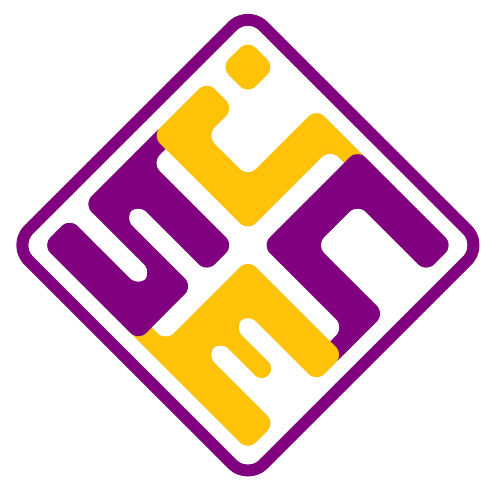Successful selling with creative videos on social media
Abstract
In the digital era, creative video content has emerged as a powerful tool for marketing, particularly among youth who are highly engaged with technology and social media platforms. Despite this potential, many young individuals still face limitations in self-confidence and technical skills required to produce compelling promotional videos. Addressing this gap, this study investigates the effectiveness of structured training programs in enhancing youths’ competencies in creative video production. The program was designed in two core stages: first, a mentoring session aimed at delivering fundamental concepts and techniques in video-based digital marketing; second, a blind competition where participants were challenged to produce original content independently, without prior exposure to others’ work. This approach was intended to stimulate creativity, encourage authentic self-expression, and build hands-on experience with digital promotional tools. Findings from this initiative revealed notable improvements in participants’ confidence, creative thinking, and technical abilities in digital marketing. Moreover, the program fostered peer collaboration, critical feedback exchange, and the expansion of participants' social networks. In conclusion, the structured training effectively empowered youth by equipping them with relevant and transferable skills for digital entrepreneurship. This model can serve as a replicable framework for similar capacity-building efforts in creative industries and youth development programs.
Di era digital, konten video kreatif telah muncul sebagai alat pemasaran yang ampuh, khususnya di kalangan anak muda yang sangat terlibat dengan teknologi dan platform media sosial. Meskipun memiliki potensi ini, banyak individu muda masih menghadapi keterbatasan dalam hal kepercayaan diri dan keterampilan teknis yang dibutuhkan untuk menghasilkan video promosi yang menarik. Untuk mengatasi kesenjangan ini, studi ini menyelidiki efektivitas program pelatihan terstruktur dalam meningkatkan kompetensi anak muda dalam produksi video kreatif. Program ini dirancang dalam dua tahap inti: pertama, sesi bimbingan yang ditujukan untuk menyampaikan konsep dan teknik dasar dalam pemasaran digital berbasis video; kedua, kompetisi buta di mana para peserta ditantang untuk menghasilkan konten asli secara mandiri, tanpa paparan sebelumnya terhadap karya orang lain. Pendekatan ini dimaksudkan untuk merangsang kreativitas, mendorong ekspresi diri yang autentik, dan membangun pengalaman langsung dengan alat promosi digital. Temuan dari inisiatif ini mengungkapkan peningkatan yang nyata dalam kepercayaan diri, pemikiran kreatif, dan kemampuan teknis peserta dalam pemasaran digital. Selain itu, program ini mendorong kolaborasi antarteman, pertukaran umpan balik kritis, dan perluasan jaringan sosial peserta. Sebagai kesimpulan, pelatihan terstruktur ini secara efektif memberdayakan anak muda dengan membekali mereka dengan keterampilan yang relevan dan dapat dipindahtangankan untuk kewirausahaan digital. Model ini dapat berfungsi sebagai kerangka kerja yang dapat direplikasi untuk upaya pengembangan kapasitas serupa dalam industri kreatif dan program pengembangan pemuda.
Keywords
Full Text:
PDFReferences
Putri, A. F., Hartati, T., & Purwinarti, T. (2018). Analisis konten kreatif pada fanpage Facebook Cadbury Dairy Milk tahun 2016. Epigram, vol. 14, no. 2, pp. 131–142. https://doi.org/10.32722/epi.v14i2.1023.
Slamet, R., Nainggolan, B., Ramdani, H., Hendriyanto, A., Lu, L., & Ilma, U. (2016). Development strategy of digital start up to confront the era of free market. Jurnal Manajemen Indonesia, vol. 16, no. 2, pp. 136–147. https://journals.telkomuniversity.ac.id/ijm/article/view/319.
Makmum, A. S. (2017). Karakteristik perilaku dan kepribadian pada masa remaja. Jurnal Penelitian Guru Indonesia, vol. 2, no. 2, pp. 17–23. https://jurnal.iicet.org/index.php/jpgi/article/view/220.
Wati, A. P., Martha, J. A., & Indrawati, A. (2020). Digital Marketing. Malang: Edulitera.
Purnomo, N. (2021). Peningkatan sumber daya manusia melalui pelatihan dan pendampingan digital marketing. Jurnal Karya Abdi Masyarakat, vol. 4, no. 3), 376–381. https://doi.org/10.22437/jkam.v4i3.11307.
Herman, N. (2022). Analisis model bisnis pasar digital Shopee. Accessed at https://osf.io/ywjpq/download/. Accessed on January 4, 2025.
Santoso, R. (2022). Disrupsi pandemi dan strategi pemulihan industri kreatif. JMK (Jurnal Manajemen dan Kewirausahaan), vol. 7, no. 1, pp. 48–58. https://doi.org/10.32503/jmk.v7i1.2101.
Driessen, C., et al. (2025). Contemporary digital marketing techniques used in unhealthy food campaigns targeting young people. Appetite, vol. 211, no. 107989, pp. 1-13. https://doi.org/10.1016/j.appet.2025.107989.
Tam, F. Y., & Lung, J. (2025). Digital marketing strategies for luxury fashion brands: A systematic literature review. International Journal of Information Management Data Insights, vol. 5, no. 1, pp. 100309-1-17. https://doi.org/10.1016/j.jjimei.2024.100309.
Breman, J. (2015). Mobilizing labour for the global coffee market: Profits from an unfree work regime in colonial Java. Amsterdam University Press. https://doi.org/10.1515/9789048527144.
Nisfiannor, M., Rostiana, R., & Puspasari, T. (2004). Hubungan antara komitmen beragama dan subjective well-being pada remaja akhir di Universitas Tarumanagara. Jurnal Psikologi, vol. 2, no. 1, pp. 74-93.
Kristianto, I. (2019). Proses kreatif Eko Supriyanto dalam penciptaan tari Balabala. Jurnal Kajian Seni, vol. 5, no. 2, pp. 207–220. https://doi.org/10.22146/jksks.46126.
Znagui, Z., & Rahmouni, B. (2019). What ecosystem model to support the creation of social innovation technopoles?. Procedia Computer Science, vol. 158, pp. 877–884. https://doi.org/10.1016/j.procs.2019.09.126.
Fakhraddine, M., Zerrad, N., Berhili, H., & Morchid, M. (2025). Digital transformation in Moroccan agriculture: Applications, used technologies, impacts on marketing, limitations, and orientations for future research. Smart Agricultural Technology, vol. 11, no. 100978, pp. 1-20. https://doi.org/10.1016/j.atech.2025.100978.
Raj, A. B., & Goute, A. K. (2025). Internal branding and technostress among employees - the mediation role of employee wellbeing and moderating effects of digital internal communication. Acta Psychologica, vol. 255, no. 104943, pp. 1-14. https://doi.org/10.1016/j.actpsy.2025.104943.
Ghaisani, A. P., Handayani, P. W., & Munajat, Q. (2017). Users’ motivation in sharing information on social media. Procedia Computer Science, vol. 124, no. 2017, pp. 530–535. https://doi.org/10.1016/j.procs.2017.12.186.
Gil-Cordero, E., Rodriguez-Rad, C., Ledesma-Chaves, P., & Sánchez del Río-Vázquez, M. E. (2023). Analysis of factors affecting the effectiveness of face-to-face marketing learning via TikTok, YouTube and video conferencing. Heliyon, vol. 9, no. 7, pp. e17195-1-20. https://doi.org/10.1016/j.heliyon.2023.e17195.
Lim, Y. J., Osman, A., Salahuddin, S. N., Romle, A. R., & Abdullah, S. (2016). Factors influencing online shopping behavior: The mediating role of purchase intention. Procedia Economics and Finance, vol. 35, pp. 401–410. https://doi.org/10.1016/s2212-5671(16)00050-2.
DOI: http://dx.doi.org/10.62870/jocse.v4i1.33668
Refbacks
- There are currently no refbacks.
Journal of Community Service in Science and Engineering (JoCSE) is licensed under a Creative Commons Attribution-ShareAlike 4.0 International License.














